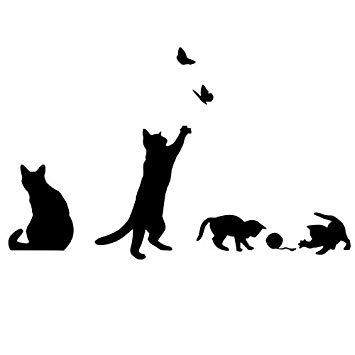Families adopting Persian and Himalayan kittens from us often ask what our recommendations are and advice on grooming their Persian or Himalayan kitten and how to keep their coat looking good.
Questions we are often asked include the following:
-Do I need to brush my Persian cat daily?
-How often do I need to bathe my Persian cat?
-What shampoo do I need to use to bathe my Persian cats?
-Do I use a comb or a brush to groom my Persian?
-What do I do if my Persian cat gets matted?
-How do I handle facial stains on my Persian cat?
-How do I deal with a Persian that won’t groom itself?
-How do I trim the claws on my Persian kitten?
-How often do I trim the claws on my Persian kitten?
Ultimately, there are many variables to take into consideration to answer the aforementioned questions about grooming your Persian or Himalayan cat. As with humans, some cats have higher standards concerning personal hygiene. Some groom impeccably while others, do not as much.
Grooming your Persian or Himalayan Cat
Persian and Himalayan cats do need to be groomed regularly. The best possible outcome for keeping your Persian or Himalayan cat groomed is ultimately about making grooming part of your daily routine. Pick a time of day that works best for your routine to make brushing your Persian or Himalayan cat. Once it becomes part of your daily routine it will be easier to keep your Persian or Himalayan cat looking beautiful and well-kept.
Grooming your Persian or Himalayan cat or kitten becomes easier over time for both you and your Persian or Himalayan kitten when grooming is part of their daily routine. You might try giving a snack or treat after you groom your Persian or Himalayan. Your cat or kitten will look forward to grooming if they are rewarded for their participation.
Multiple factors play a role in how often your Persian or Himalayan cat should be bathed. Factors such as daily grooming habits, eating habits, personal hygiene, the type of coat they have (dry or oily), their overall health as well as environmental and geographical factors (are you in a dry or humid climate).
Persian Facial Staining: You may be experiencing facial stains with your Persian or Himalayan cat or kitten facial staining shows up much more prominently on a lighter-colored coat than it does on a dark-colored coat.
Persian Facial Stain Removal: You can lighten facial staining on your Persian or Himalayan cat with Grooming Powder.
Persian Cat Bath
Before you bathe your cat, be sure to have everything you need within an arms-reach. You will need a large towel or two, shampoo, conditioner, baby shampoo, and a toothbrush. Make sure you have everything you need before you get your cat wet.
Removing Mats from your Persian or Himalayan Cat
Removing mats and knots in your Persian or Himalayans coat is very important. Use a wide tooth metal comb to remove mats, and do not attempt to bathe a cat if they have mats in their coat.
Drying Your Persian or Himalayan Cat after the Bath
Be sure to dry your Persian or Himalayan cat or kitten after you have bathed them. Be careful if you are using a blow dryer to not burn their skin. Depending upon the blow dryer you are using, the warm setting can still be too hot.
Persian and Himalayan Cat Hair Types – Cats have Four Basic Hair Types:
Guard Hairs – Guard hairs are the most obvious hair on your cat and make up most of the outer top coat. They are straight, slender, and taper toward the tip. Guard hairs are longer and thicker than either the down or awn hairs. They protect the underfur from the outside elements and act as a waterproof outer jacket. The cuticles of these hairs have very rough and microscopically small barbs. This is the main reason cat hairs stick to clothing.
Awn Hairs – Awn hairs are the hairs that make up the middle of the coat of the cat. These hairs are intermediate in size and have a broken or cracked cuticle that is rough and part of the primary coat of the cat. Their multi-purpose is to help insulate the cat and protect the down hairs below.
Down Hairs – Down hairs are the hairs that are the closest to the skin and form the undercoat of your cat. They are short, soft and fine. Just like a goose-down feather comforter, they help keep the cat warm. Although the hairs appear straight they look crimped or wavy if viewed under magnification. The wavy effect of the hairs helps trap in the air and helps keep the cat insulated.
Vibrissae – Vibrissae are the thicker hairs that are also known as whiskers on the muzzle.
Within the Persian and Himalayan cat breed, there is a wide range of differences in the type of hair and distribution.
CFA Registered Cattery
Texas Persian & Himalayan Breeder
Persian & Himalayan Kittens for Adoption
Call or Text: (214) 551-0529

Texas Persian Cat Breeder
Texas Himalayan Persian Cat Breeder
Texas Shaded Golden Persian Cat Breeder
Persian Kittens available for Adoption in Texas
Himalayan Kittens available for Adoption in Texas
Kitten Adoption in Texas
Reputable Persian Cat Breeder in Texas
Persian kittens in Texas